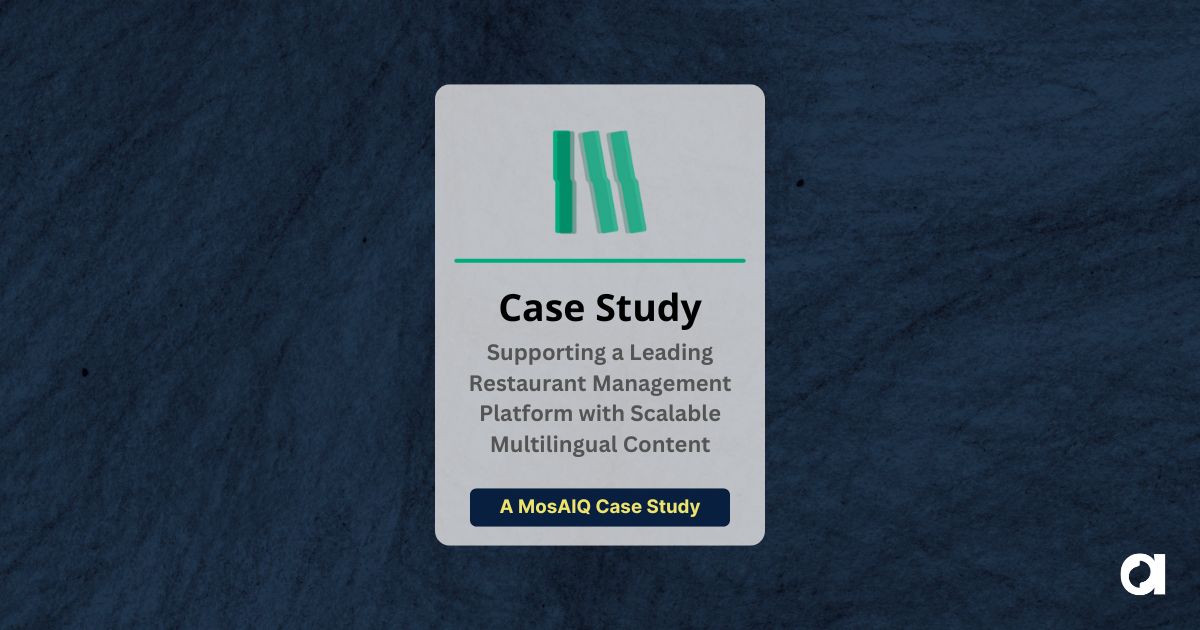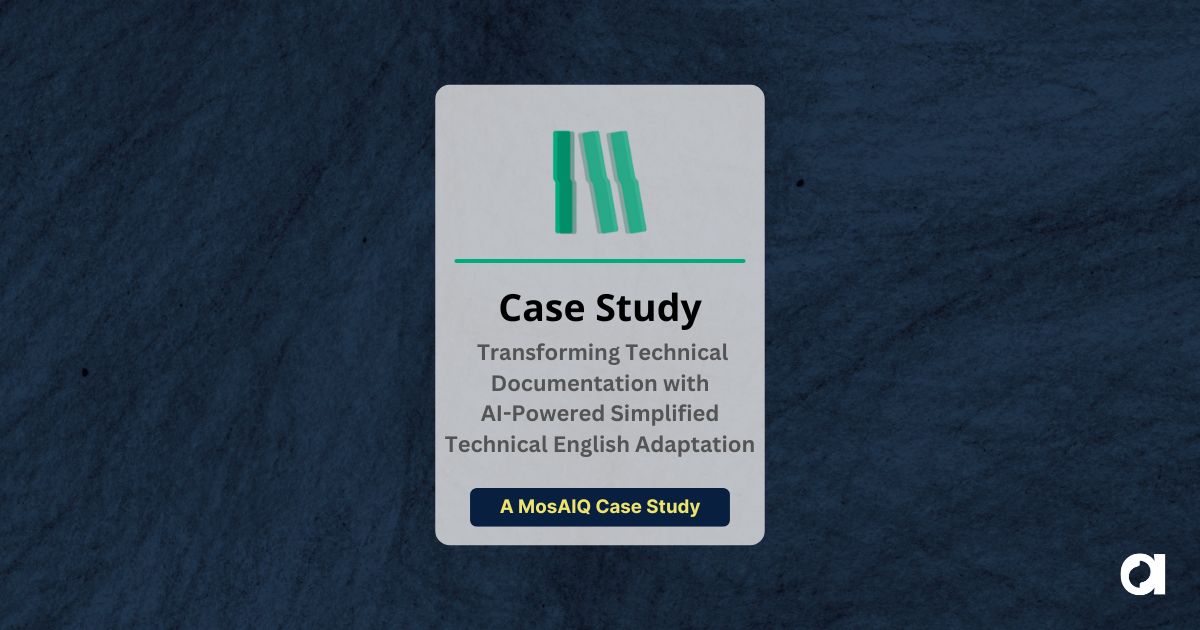When it comes to metrics, there are two main schools of thought. One says you can’t change what you don’t measure or record. The other insists that “not everything that counts can be counted.” The truth lies somewhere in the middle, especially regarding metrics for your translation and localization projects.
Translating and localizing is a highly subjective profession in which the typical idea of ROI doesn’t always apply. Jeff Beatty, senior head of localization at Mozilla, said it best: “Translation is a revenue enabler, not a revenue generator.”
For example, imagine marketing content that must be transcreated or creatively adapted to hit the right tone and feel for the local target audience. Click rate or page views don’t tell you how people feel about the tone. While translation isn’t totally devoid of data-driven insights, technical translation projects, for example, are easier to evaluate by the numbers.
“It’s difficult to capture and measure something that cannot be defined easily. And that’s very important, actually, because global content effectiveness is about making sure that the content that is being localized and delivered to audiences, all customers, is going to create value.”
Bruno Herrmann, Executive Advisor on Globalization and Localization
Either way, key performance indicators (KPIs) are vital to evaluate the effectiveness of a translation project. Getting the right KPIs in place and knowing how efficiently you used a project’s budget is also very helpful when the time comes to get approval for your next translation and localization budget.
[form_newsletter]
When you develop your KPIs, you want to make sure that you’re actually measuring what you want to be measuring. Just like goals, KPIs should fit in the SMART framework: specific, measurable, attainable, relevant, and time-bound.
And with a translation project, you face the unique challenge of evaluating the process and the results of your translation efforts.
Part 1: Measuring the Process
To determine if your process is efficient, your KPIs should track the speed of the work (which is directly linked to your going-to-market speed) and the translation accuracy rate (since more errors = more time spent) concerning costs.

These are some typical examples of KPIs that measure the translation and localization process:
- Turnaround time
- Cost-per-word
- Throughput rate
- Reviews required
- % Right first-time quality
- % Translation error rate – linguistic and technical
- % Translation milestones met or on-time deliveries
- % Content recycled or prior assets used
- Overall customer satisfaction
Established industry standards for quality assurance and methods, like ISO 171000 and others, are a suitable place to start to figure out what KPIs are most important to you. Once you have a clear picture of what you want to measure, you can create a custom suite of metrics for your project.
Efficiency isn’t just about speed at a low cost. Sometimes, a slightly higher cost might ensure a better project, or a little extra work upfront will allow the entire process to run smoothly, saving time overall. We think it’s a promising idea to define what efficiency means to you before starting a project so that you can get meaning from your measurements.
Part 2: Reaching the Objectives
Next, you want to determine if your newly translated and localized website or localized marketing content achieves its objectives. Offering your product or service translated to the local market should bring you more customers, higher customer satisfaction, better brand awareness, and in the end, more revenue.

In fact, a survey conducted by Common Sense Advisory among Fortune 500 companies concluded that those who invested in translation were 1.5 times more likely to see their total revenue rise. And a recent STC Intercom survey noted that 93.8% of respondents consider high-quality information particularly important to their satisfaction with a product.
While the number of newly acquired customers and the market share won are easy to measure, aspects like brand awareness and customer satisfaction are harder to determine and quantify.
Here are a few suggestions for KPIs that are useful when measuring how your project met its objectives and advanced growth:
- # New customers acquired in global markets
- % Visitor conversion
- # Traffic (by country and language)
- % Market share
- % Translation ROI
- Net promoter score
- Support calls: resolution rate and customer satisfaction
- Multilingual SEO metrics
Part 3: Measure your Impact
Translation projects don’t end when you deliver the content to the client. They continue to have an impact when they’re out in the world, so you can develop a set of metrics to describe the impact of your work.

And because translated content isn’t purely about dollars in and dollars out, a focus on qualitative data like customer experience and perceptions is useful. It’s also helpful to highlight translation and localization’s role in a go-to-market strategy.
You can ask questions like:
- How much revenue comes from the countries that speak the languages your team supports? Though you can’t attribute this revenue to your localization work, you can create a percentage value highlighting the vital role translation plays in supporting revenue generation.
- How do customers experience and make decisions based on localized content? There’s lots of room to create very granular metrics and collect a lot of data on the customer’s perceived value of your content.
When you develop your KPI suite, you should derive your metrics from your strategic goals to maximize your chance of getting support and funding for your next translation and localization project.
Be careful not to go overboard, though—the K(ey) in KPI is important! Too many KPIs increase the danger of getting lost in data and losing sight of the essential performance indicators. Or, as Albert Einstein once said: “Not everything that can be counted, counts.”
So, boil down the number of KPIs you use as far as possible. You can even use dedicated software to create a neat dashboard that shows your most important KPIs in real-time.
Argos is ready to help you wrangle your KPIs, whether that’s optimizing your existing metrics or developing custom ones. Contact us to get the conversation started.
 Argos Multilingual
2 min. read
Argos Multilingual
2 min. read
Argos Multilingual has been named one of the fastest growing LSPs in the last three years, according to CSA Research. We’re excited and planning to continue full steam ahead. Here’s what our CEO, Véronique Özkaya had to say: “At Argos, growth is a must. Growth enables us to keep our talent and give our employees […]

 Antoine Rey
5 min. read
Antoine Rey
5 min. read
This post is based on the Global Ambitions episodes “Getting a Head Start on Work Experience” with Calvin Westfall, president of Locale Codes, the translation and localization club at Brigham Young University, and “Localization Certificates to Boost Your Career” with Danielle Marcos, an adjunct professor at the University of Washington and previously a global program […]











